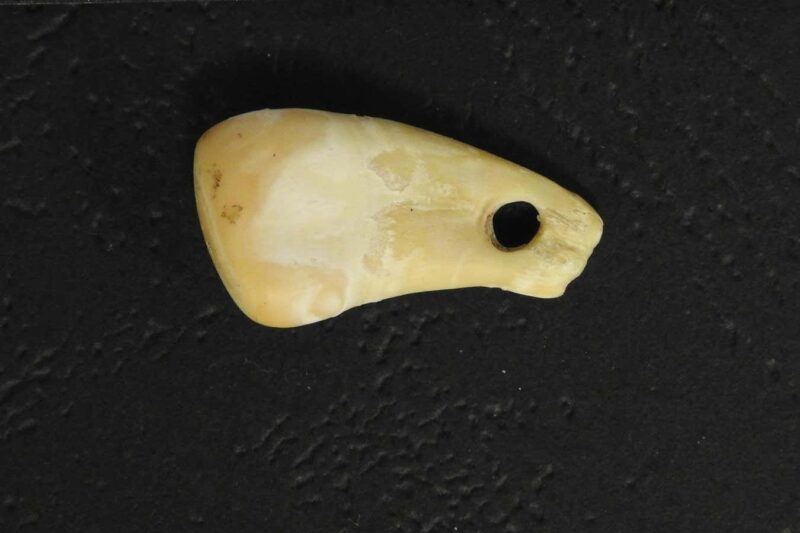A recent study conducted by researchers at Leiden University in the Netherlands has successfully extracted DNA from a tooth pendant dating back approximately 25,000 years. The tooth, which was worn as a necklace bead, absorbed DNA from the wearer’s sweat as it rested against her chest and neck. The groundbreaking new technique used in the study has the potential to uncover valuable insights about ancient populations, such as social customs and gender roles.
Traditionally, extracting DNA from ancient artifacts such as tools, weapons, and ornaments requires destructive methods that can cause permanent damage. However, the team led by Marie Soressi developed a non-destructive process that took eight years to develop. By placing the artifacts in a sodium phosphate solution and gradually raising the temperature, they were able to release human DNA without causing any damage to the specimens.
The researchers tested their technique on various artifacts from Paleolithic caves in France, as well as on tooth pendants excavated by colleagues in Russia and Bulgaria. While the majority of the tooth pendants contained animal DNA from the species used to make them, one pendant from Denisova cave in Russia revealed human DNA fragments primarily from a single individual. The DNA analysis confirmed that the wearer of the pendant was a female Homo sapiens closely related to an ancient tribe found over 1500 kilometers to the east.
This discovery has significant implications for understanding ancient societies. By linking objects to individuals, researchers can investigate the social roles of different genders and explore family relationships. Furthermore, the technique could help identify the purpose of ancient jewelry, shedding light on the identity, group affiliation, and marital status of the wearer. It may also help resolve debates about whether certain artifacts were created and used by Homo sapiens or Neanderthals.
This breakthrough could pave the way for DNA analyses of museum artifacts worldwide, as it offers a non-invasive method that preserves the integrity of the objects. Researchers hope that curators will be more willing to allow their specimens to be analyzed, leading to further advancements in ancient DNA research.








